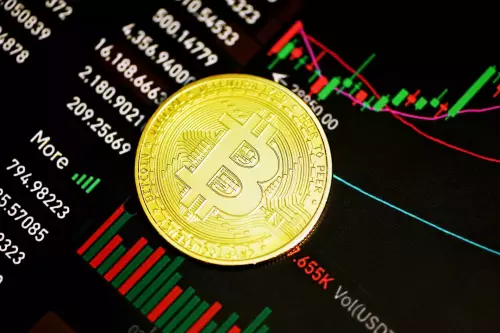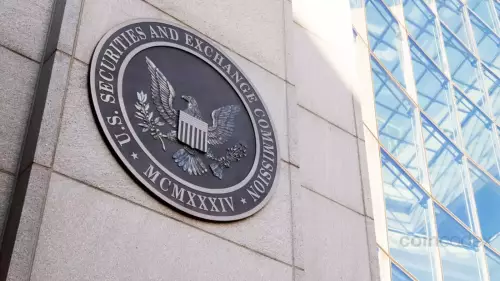 |
|
 |
|
 |
|
 |
|
 |
|
 |
|
 |
|
 |
|
 |
|
 |
|
 |
|
 |
|
 |
|
 |
|
 |
|
Cryptocurrency News Articles
Renzo, EigenLayer, and Cross-Chain Restaking: A New Era for DeFi?
Jul 16, 2025 at 11:45 pm
Explore the rise of Renzo, EigenLayer, and cross-chain restaking, examining recent developments, challenges, and the future of decentralized finance.

Renzo, EigenLayer, and Cross-Chain Restaking: A New Era for DeFi?
The DeFi landscape is buzzing with activity, and at the heart of it all are Renzo, EigenLayer, and the concept of cross-chain restaking. These innovations promise enhanced security, greater rewards, and a more interconnected blockchain ecosystem. Let's dive into what's happening and what it all means.
EigenLayer's Evolution: From ETH Restaking to Flow Vaults
EigenLayer is shaking things up. Originally focused on ETH restaking, they've now launched Flow Vaults, developed with support from Renzo and Concrete. This upgrade allows users to restake ERC-20 tokens, including assets from Ethereum Layer-2 networks. This is a game-changer because it lets projects and users restake a wider range of assets and still receive liquid tokens that can be used across DeFi protocols.
Each Flow Vault is customizable, offering creators control over accepted tokens, validators, and deposit lock-up periods. This flexibility is a huge win for DAOs, funds, and projects, allowing them to launch their own vaults without needing to code from scratch. Plus, with tools for identity verification, whitelisting, and custody services, even regulated institutions can now participate in the EigenLayer network.
Renzo's REZ Token: Riding the Wave
Renzo Protocol's native token, REZ, has seen a significant surge, jumping over 71% recently. This price increase coincided with the launch of Flow Vaults. REZ broke above a downtrend that had been in place since early April, signaling strong upward momentum. While the Relative Strength Index (RSI) suggests REZ might be in overbought territory, buyers are still in control, with the price holding above key resistance levels. Renzo's ongoing buyback program, where they've been reducing the available supply of REZ, is also contributing to the upward pressure on the token's price.
Cross-Chain Restaking: BNB Chain and Lorenzo Protocol's USD1+ OTF
Cross-chain restaking is gaining traction, and BNB Chain is becoming a key player. Lorenzo Protocol has launched the USD1+ On-Chain Traded Fund (OTF) on the BNB Chain testnet. This product combines tokenized real-world assets (RWAs), CeFi algorithmic strategies, and DeFi yield generation, all denominated in the USD1 stablecoin. It allows users to deposit stablecoins to create sUSD1+ tokens that compound in value automatically, eliminating the need for active yield farming.
The USD1+ OTF offers real-time transparency, enterprise-grade security, and integrated compliance features. Lorenzo aims to make real-yield products the hallmark of next-generation programmable finance, allowing anyone to benefit from RWA and CeFi returns through decentralized infrastructure.
Challenges and Future Outlook
While restaking holds immense potential, it's not without its challenges. Earlier in 2024-2025, the ecosystem faced declining user activity and token price declines. The complexity of restaking protocols and shared security models also posed a barrier to entry. However, projects like EigenLayer and Ether.fi are adapting. EigenLayer is focusing on infrastructure innovation with its EigenCloud suite, while Ether.fi has pivoted to become a crypto neobank.
EigenLayer's introduction of slashing mechanisms to mitigate security concerns is a step in the right direction. The integration of restaking into broader application ecosystems is also crucial for sustaining user interest and capital influx. Despite the hurdles, restaking protocols are playing a vital role in enhancing Ethereum's cryptoeconomic security and driving innovation across the blockchain space.
Final Thoughts
Renzo, EigenLayer, and cross-chain restaking are reshaping the DeFi landscape. From EigenLayer's Flow Vaults to Lorenzo Protocol's USD1+ OTF, these innovations are opening up new possibilities for users and institutions alike. Sure, there are challenges to overcome, but the potential rewards are too significant to ignore. So, buckle up and get ready for an exciting ride – the future of DeFi is here, and it's looking pretty wild!
Disclaimer:info@kdj.com
The information provided is not trading advice. kdj.com does not assume any responsibility for any investments made based on the information provided in this article. Cryptocurrencies are highly volatile and it is highly recommended that you invest with caution after thorough research!
If you believe that the content used on this website infringes your copyright, please contact us immediately (info@kdj.com) and we will delete it promptly.






























































